The Best Jewish Children’s Books of 2018
From biblical tales to Holocaust stories, these books make perfect Hanukkah gifts—with a dash of magic and a bit of jazz
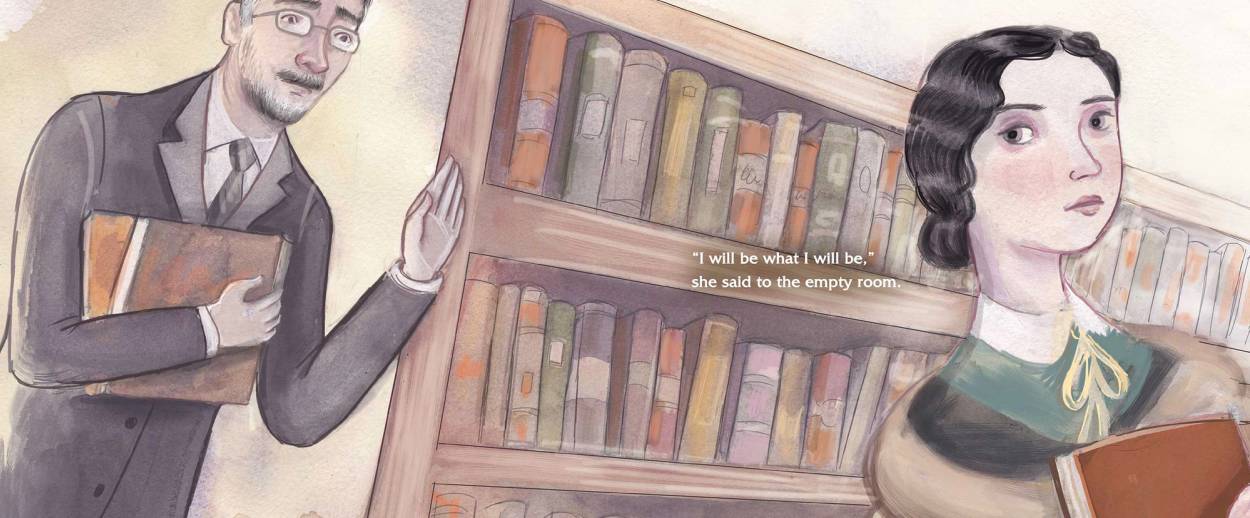
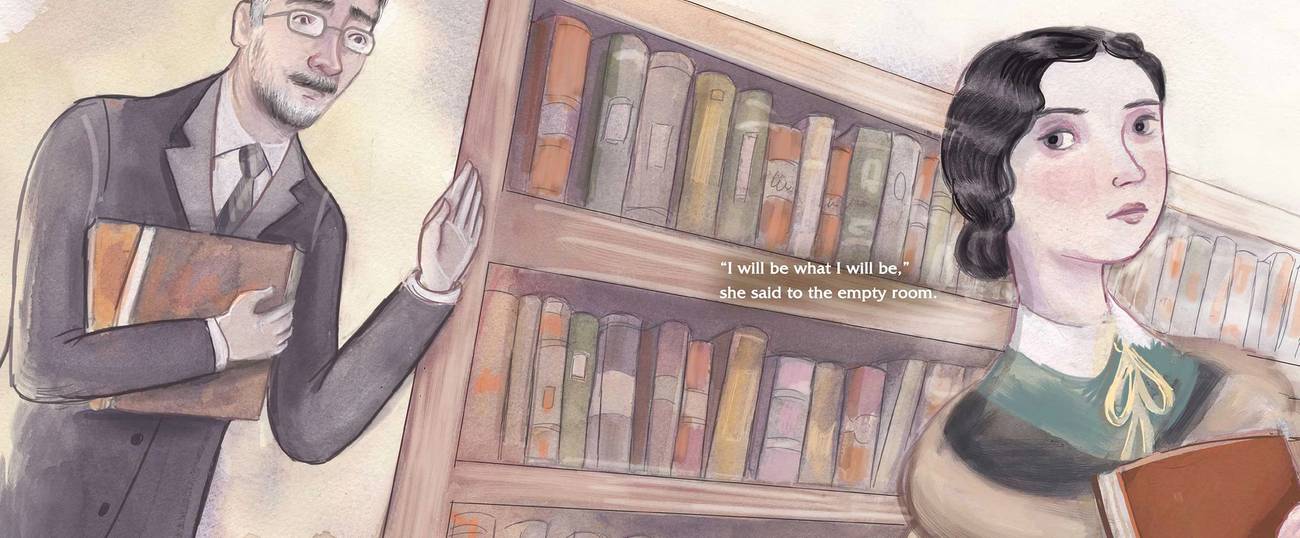


2018, not to put too fine a point on it, has been ungreat. Perhaps our current political situation has dampened my usual interest in picture books, because I can’t recall a time in which so few Jewish picture books spoke to me. Maurice Sendak’s final picture book came out this year, and I loathed it. I did love a bunch of non-Jewish picture books…though, now that I consider their subject matter—bewildered new immigrants, dreams of seeing a beloved grandfather again, small children’s feelings of aloneness, the beautiful isolation of lighthouses, an abandoned house in the woods, a toddler’s sense of loss, and the color blue—maybe my therapist and I need to chat.
On the upside, this was the best year for Jewishly inflected older-kid books since I started doing this column. If I were to hazard a guess about why, I’d say that older-kid Jewish books seem to be engaging ever more authentically with the real world and all its nuances, and the increased interest in diverse books has meant that more novels with explicitly Jewish content are coming out from mainstream publishers. Meanwhile, the strictures of a picture book—the fact that despite their short length, I want literary accomplishment, age-appropriate delivery, enticing art, and emotional complexity—may make it harder for illustrated books to provide the richness I’m craving these days.
Let’s look at the books that did work for me:
PICTURE BOOKS
I’ve already rhapsodized about three picture books focused on the life of Irving Berlin (Irving Berlin: The Immigrant Boy Who Made America Sing by Nancy Churnin, illustrated by James Rey Sanchez; Write On, Irving Berlin! by Leslie Kimmelman, illustrated by David C. Gardner; and God Bless America: The Story of an Immigrant Named Irving Berlin, by Adah Nuchi, illustrated by Rob Polivka). All are well worth your and your kid’s time. I’ve also written about my admiration for A Moon for Moe and Mo by Jane Breskin Zalben, illustrated by Mehrdokht Amini, about a rambunctious Jewish boy named Mo and a lively Muslim boy named Moe who live at opposite ends of Flatbush Avenue in Brooklyn. The two have a chance meeting in Sahadi’s Market that turns into a friendship. It’s visually lush and utterly charming.
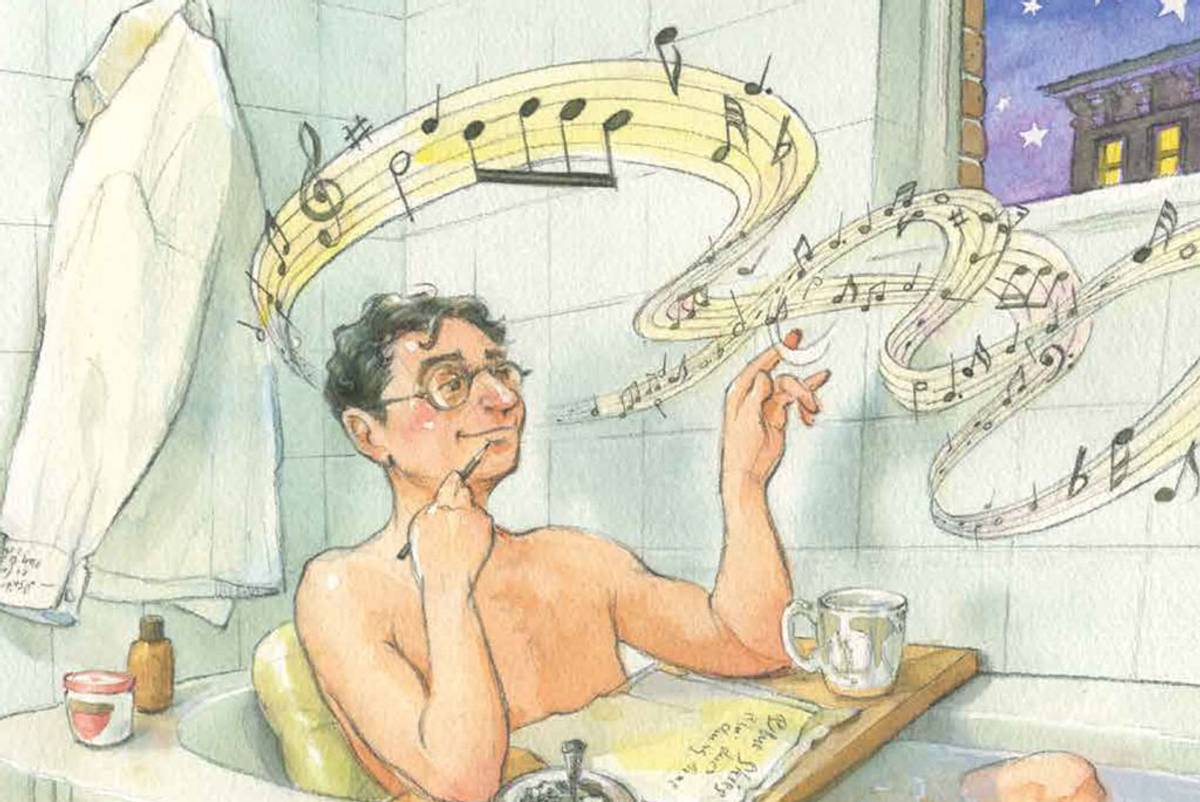
Onward: Where’s the Potty on this Ark by Kerry Olitzky, adorably illustrated by Abigail Tompkins, combines animals and poop, two proven childhood faves. After a brief introductory note about varying rabbinical opinions about waste disposal on Noah’s Ark (as we all know, Jews will debate anything), we jump right into a lighthearted, sweetly illustrated retelling of the familiar story. Naamah, Noah’s wife, reassures the animals that their temporary home has everything they’ll need: “Places to eat. Places to sleep. Places to play. And a potty room in the bottom of the Ark with plenty of different potties so that everyone will be comfortable.” There’s a full page of different potties: litter boxes, containers of hay, little clumps of reeds, groups of rocks, latrines. We even get a quick potty-training lesson: Mother Hen takes Raccoon to the appropriate potty, encourages him to do his business, doesn’t rush him (“She knows it is hard to learn new things”—way to make us all look bad, Mother Hen), and returns him to the rest of the assembled creatures. After Mother Hen has done the actual pottying work, Owl mansplains pooping: “Your body is special. All kinds of things are happening inside it. Food goes in and helps to make us strong. But food also needs a way to leave your body when your body is done using it. That’s when we go to the potty.” Owl then teaches the animals and the reader a variant of the Asher Yatzar blessing: “Thank you God, for making my wonderful body do its work.” Did I say that Jews will debate everything? We also have a prayer for everything. (Ages 1-4)
When I first heard about All of a Kind Family Hanukkah by Emily Jenkins and Paul O. Zelinsky, the first picture book starring the middle-grade characters created by Sydney Taylor and beloved by generations, my thought was “Chutzpahdik!” Sure, Jenkins and Zelinsky are children’s lit rock stars, but how dare they futz with perfection? I was wrong. Just look at that cover! Zelinsky captures the essence of the girls in bold, powerful strokes: There’s Henny, giving epic side-eye! Gertie, with happily squinchy eyes, a closed-mouthed grin and a slightly bulbous Sendakian nose! Buttoned boots and pinafores on everybody! The art throughout is luscious, framed in rich color and heavy yet soft black lines. The heavy paper, too, conveys that this book is a keeper. The story, set in 1912, is about Gertie having a humongo tantrum after being told she’s too young to help Mama and the bigger girls with Hanukkah prep. “You’re lucky; you don’t have to do anything. You can just play all the time,” Henny says in the most passive-aggressive, Henny-est way possible. Zelinsky draws Gertie’s foot-stomping, brow-furrowing, hair-flying, fists-clenching explosion in a tilted perspective from above, enhancing her feelings of smallness. She gets put in timeout, hides, and is ultimately drawn out by Papa’s gentle humor and the promise of an important job: helping to light the first candle of the menorah. “The latkes taste of history and freedom, of love and crispy potato,” Jenkins writes, and I’M NOT CRYING YOU ARE. (Ages 3-7)
I like the idea behind The Edelweiss Pirates by Jennifer Elvgren, illustrated by Daniela Stamatiadi, more than the execution. But if you’re a music lover willing to do a bit of extra education, it may be up your and your kid’s alley. The story is grounded in fact: In Germany in 1938, jazz music was forbidden, but young teenage rebels who called themselves The Edelweiss Pirates played and listened to jazz, swing-danced, created anti-Nazi graffiti and leaflets, sabotaged Nazi cars and trains, and tried to help Jews. This picture book tells the story of Kurt, who plays trumpet and wants to be an Edelweiss Pirate like his clarinetist brother, Albert. But Kurt remains silent as his Jewish clarinet-playing pal Fritz is increasingly abused by students and teachers at school. Finally, when the school band has been assigned to play a piece by Richard Wagner—Hitler’s fave composer—Kurt takes a stand. He belts out Louis Armstrong’s “Saint Louis Blues” on his horn, drowning out Wagner. The book doesn’t make clear why the Nazis considered jazz degenerate music (or what “Edelweiss” is, for that matter), and the afterword isn’t much help. Further, the wispy, pale illustrations seem ill-suited to a book about bold and dangerous music. Elvgren’s The Whispering Town, which was on my Best Books list in 2014, is a better righteous-gentiles story, with more fitting art. Still, there’s a ton for families to discuss here, and if you’re willing to create a playlist and have a seditious-music dance party in the living room, let ’er rip. (Ages 8-12)
Here’s my oddball choice of the year: And There Was Evening and There Was Morning by Harriet Cohen Helfand and Ellen Kahan Zager, illustrated by Ellen Kahan Zager. It’s the biblical story of creation, each spread depicting what God made that day. The caveat: Your kid must know the aleph-bet inside and out, and have a working knowledge of Hebrew, because every star and tree and fruit and animal is composed of the Hebrew letters that make up its name. For instance, on the second day, God spoke water into being … and the tiny, repeated word mayim (water) forms wave upon wave in different shades of blue. On the fourth day, God created the stars and planets … and if we look closely at the tiny stars strewn across the page, we see that each is made of the word kochav (star)—tiny sparks of letters arrayed around a dot. The overall artistic endeavor feels almost mystical; words make things become. It’s about storytelling as creation. But if your kid isn’t bilingual or doesn’t go to Jewish day school, the puzzles will probably be too frustrating, even though there’s a dictionary in the back with pictures of each animal in its made-of-letters form, the English translation, and the name spelled out in easier-to-read Hebrew letters. Funny story: I snottily informed the publisher that perhaps there was a printer’s error in my galley copy, because all the animals on the bottom half of the page representing the sixth day were upside down. She pointed out that all the upside-down animals are Australian. D’oh! What a subtle, nifty way of conveying the spread of fauna across the globe! A witty, snazzy treat. (Ages 4-12)
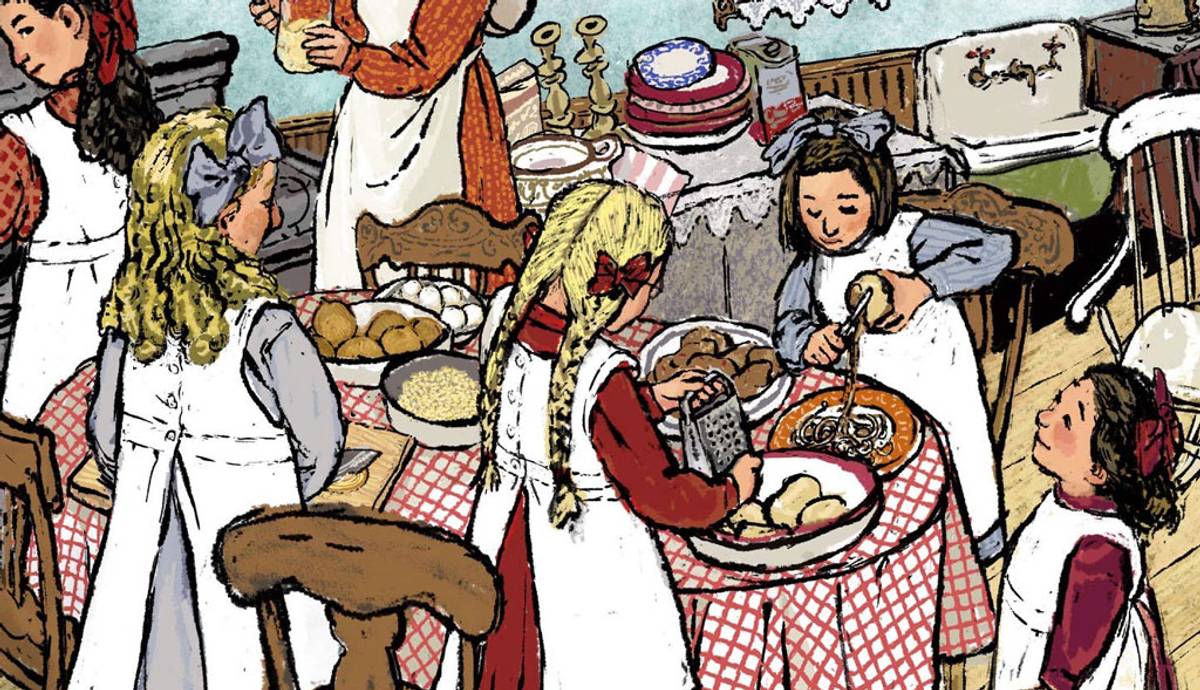
And we move from a story everyone knows to a story few do: Regina Persisted: An Untold Story, by Sandy Eisenberg Sasso, illustrated by Margeaux Lucas. It’s the true history of the first woman rabbi, Regina Jonas, who was ordained in Berlin in 1935. It feels special that this book was written by the first woman Reconstructionist rabbi, like a letter across the years from one trailblazer to another, as well as an indication that we still live in an era of firsts. As the title implies, Regina was a woman who refused to be silenced or trivialized. She loved teaching and learning, she loved Jewish stories and texts, and she could see no reason why women were not allowed to join the rabbinate. She kept being told no, but she persisted. One spread shows Regina, with marcelled waves in her hair and a prim white collar and ribbon, surrounded by handwritten exhortations: “Be careful, don’t make trouble!” “Be a teacher like other women!” “Women are not smart enough!” “See how Regina dresses! She doesn’t look like a rabbi!” “Do what you are supposed to do—go home and cook!” But Regina wouldn’t be denied; she eventually achieved her dream. Fashion, cars, and furnishings all provide an immersive sense of time and place. A sad afterword tells us that Regina’s life ended in Auschwitz in 1944. Not until 1972 was another woman rabbi ordained…but today there are close to a thousand women rabbis throughout the world. (Ages 7-12)
CHAPTER BOOKS
All Three Stooges by Erica Perl. If you believe that Jewish comedy is religion, this is the book for you. It’s about Noah and Dash, two comedy-nerd seventh graders who attend Hebrew school and bar mitzvah classes together and share an obsessive love of Jewishly inflected standup, sitcom, and vintage comedy. But when Dash’s father dies and Dash starts avoiding Noah, Noah has to wrestle with being a good friend as well as with his own feelings of anger and loss. This book deals with a scary subject—suicide—in a healthy, emotionally legit, age-appropriate way. Parents are desperate to shield their kids from knowledge of grief and suffering, but real life doesn’t often oblige. And silence only makes fraught topics feel scarier. This book is so rich, with so much humor and physical comedy and goofiness and healing as well as pain. The depiction of a mandatory Israeli dance class feels like an SNL skit, and I mean that as high praise. All Three Stooges is a tremendous achievement. (Ages 10-13)
Another thoughtful, contemporary middle-grade choice is The Length of a String by Elissa Brent Weissman. Imani Mandel, an African-American Jewish adoptee in Baltimore, wants one thing for her bat mitzvah: to try to find her birth parents. And her mom really, really doesn’t want her to, even though, as practically the only person of color in her entire Jewish community, Imani wants to feel the pull of connection to someone who looks like her and can tell her more about her unwritten story. But then her great-grandmother Anna dies, and Imani finds Anna’s fragile old diary. The diary starts in 1941, when Anna was the same age Imani is now. Anna had to flee Nazi-occupied Luxembourg for Brooklyn by herself, and hoped to reconnect with her lost family. Imani becomes increasingly engaged in her great-grandmother’s story, even deciding to do her annoying Holocaust research project on Luxembourg during WWII, and starts trying to unravel the mysteries in Anna’s life. Weissman is juggling a lot here—two character’s stories, a lot of secondary characters, history and school crushes and adoption and racial and religious identity—but she connects all the dots. The repeated string metaphors—the string is about human connection!—get to be a bit much for an adult reader, but the lovely ending blindsided me and made me cry. (Ages 10-14)
Unlike The Length of a String, Resistance is entirely set during WWII. It’s by Jennifer Nielsen, a New York Times-bestselling epic fantasy writer (!) who is apparently also really unfairly good at middle-grade historical fiction. Resistance is the story of the Warsaw Ghetto Uprising; I hadn’t realized how desperately I wanted a Holocaust story in which Jews aren’t just victims. Our heroine, Chaya, who looks like a wholesome blond Polish girl, becomes a courier to try to save Jews and stymie the Nazis; she smuggles food, weapons, papers, even a baby (drugged with sleeping pills) hidden in the false bottom of a backpack. The book is thrilling: Chaya leaps from trains, blows up German soldiers, engages in shootouts. Like Refugee (on my Best Books list last year), it’s a total page turner. Chaya is impatient, judgmental, angry—but over the course of the book, she realizes how much she can learn from others. Like Refugee, Resistance hides its extensive research with action and terrific readability. Characters die, but the book isn’t unmanageably scary or hopeless, because Chaya isn’t merely acted upon, like many Jews in Holocaust stories. She acts. A long afterword explains the historic truth behind the tale. (Ages 10-14)
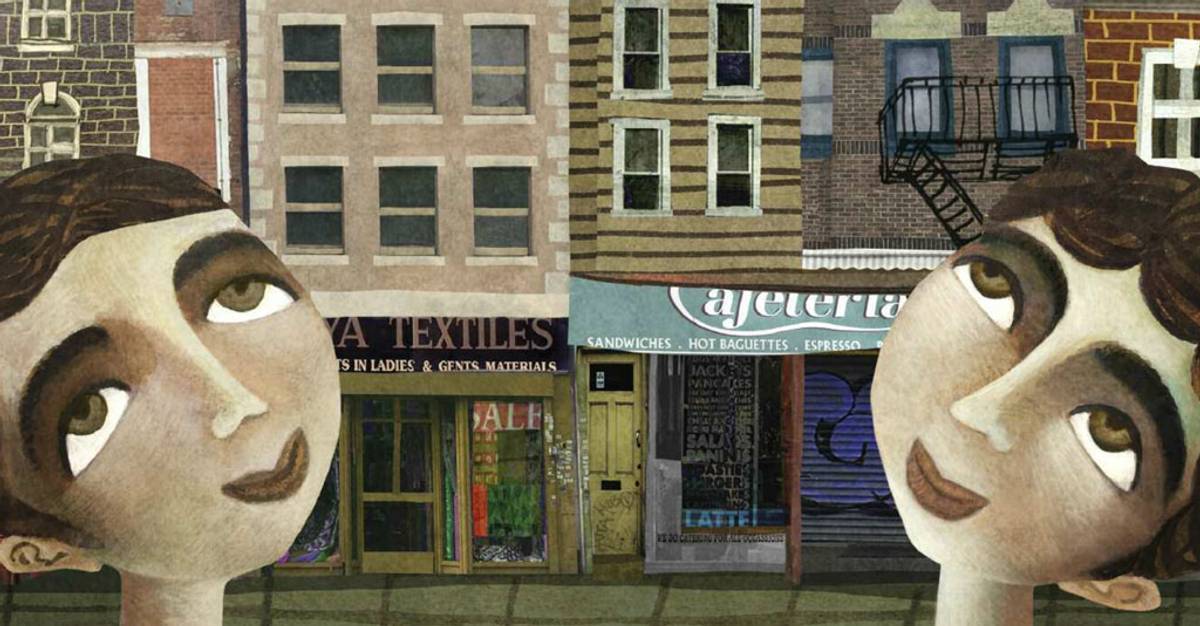
Last year, I enjoyed Katharine Locke’s The Girl With the Red Balloon, an imaginative fantasy set primarily in East Germany in 1988, about math-and-blood-powered balloons. (You gotta go with it.) The Spy With the Red Balloon is a stand-alone prequel; this one is about two teenage American Jewish siblings, Ilse and Wolf Klein, who are blackmailed into service by the American government during WWII. Ilse, a socially awkward genius mathematician, is working on a magic-related offshoot of the Manhattan Project. Wolf, her smart but not genius smart older brother, is sent behind enemy lines to sabotage the Germans’ own bomb-building efforts. But it turns out there’s a spy in the works, and the siblings are both in terrible danger, and twists and turns abound. I loved the siblings’ bond (and bickering) and the book’s exploration of complicated and overlapping identities: Jewishness, Americanness, German-American-Jewishness, as well as queerness, patriotism, and racism. As with The Girl With the Red Balloon, I was frustrated by the lack of explanation of how the balloon magic worked—c’mon, if it’s science as well as magic, gimme some pretend science! And once again, many secondary characters aren’t as fleshed out as they could be. But the plotting is stronger than in the first balloon-makers book. And I appreciate that, like Resistance, this book features Jews punching Nazis in the face. Very satisfying. (Ages 12+)
Talk about bravery: If You Don’t Have Anything Nice to Say by Leila Sales is a gutsy, gutsy book. It’s about the consequences of screwing up in the age of social media and the difficulty of atoning when all you really want is to evade consequences. Winter Halperin is the Jewish-day-school-educated daughter of a parenting expert (I squirmed at the merciless, very funny depiction of Winter’s mom’s self-satisfied child-rearing punditry) and a former spelling-bee champion who makes a wee joke online that, well, she didn’t intend to sound racist, but you sure could read it that way. (Sales was inspired by the true story of publicist Justine Sacco, who jokingly tweeted as she boarded a plane, “Going to Africa! Hope I don’t get AIDS! Just kidding. I’m white!” Sacco was trying, ineptly, to mock white privilege. She didn’t intend to sound racist … but you sure could read it that way.) Winter’s ill-considered Facebook joke goes viral and turns into a hashtag wave of fury, and in a panic she issues a god-awful, defensive, clueless apology that only makes things worse. The college she’s supposed to attend rescinds its acceptance. Her mom hires a high-priced apology consultant. She attends apology-centered residential therapy (again, the fake-evolved therapeutic talk is hilarious) for rich people who’ve screwed up. The book, suffused with Jewish ethics and references, wrestles with the meaning of apology and forgiveness. Winter eventually begins to understand others’ perspectives, but she never stops being problematic. And the fact is, she’s a lot like many well-off, white Jewish American teenagers. Reading this book often feels uncomfortable, as it should. I admired it tremendously. It distresses me that self-consciously woke white girls resolutely refuse to see themselves in Winter (or see any nuance or acknowledge the possibility of redemption at all) and lash out at the book—see the one-star reviews on Goodreads—in a way that proves Sales’ point. (Ages 12+)
Of course, privileged Jewish teen girl problems pale when measured against those of the most famous dead Jewish teen girl in history. I wanted to dislike Anne Frank’s Diary: The Graphic Adaptation because books about Anne usually feel opportunistic or simplistic. But this comic-book version, authorized by the Anne Frank Foundation, is a monumental achievement. In large part that’s because it wears its importance lightly. Structured and edited by Ari Folman (who created the Israeli TV show In Treatment and directed the Oscar-nominated film Waltz With Bashir) and illustrated by David Polonsky (an Israeli children’s book artist and teacher of animation and illustration at Bezalel Academy of Art and Design), it captures Anne’s teenage-ness: her love of drama, her rabid jealousy of her perfect sister, Margot, her appreciation of the physical comedy provided by the tacky van Daan adults. She feels like a real person, not a symbol. And there’s so much humor in these illustrations! Polonsky draws kinetically, varying panel size and bringing in little jokes and references from art history and advertising. He draws Anne with mobile, animated features and huge eyes. Folman nimbly provides historical context the original diary lacks; this version clarifies what was happening in the outside world as Anne was writing. But Folman also includes several full pages of unfiltered, unillustrated diary pages, showing real respect for Anne’s writerly voice. In an afterword, Folman says he only used 5 percent of the entire original diary; it feels like much more. He and Polonsky are turning the graphic adaptation into an animated film. (Not published as a children’s book, but fine for 12+)
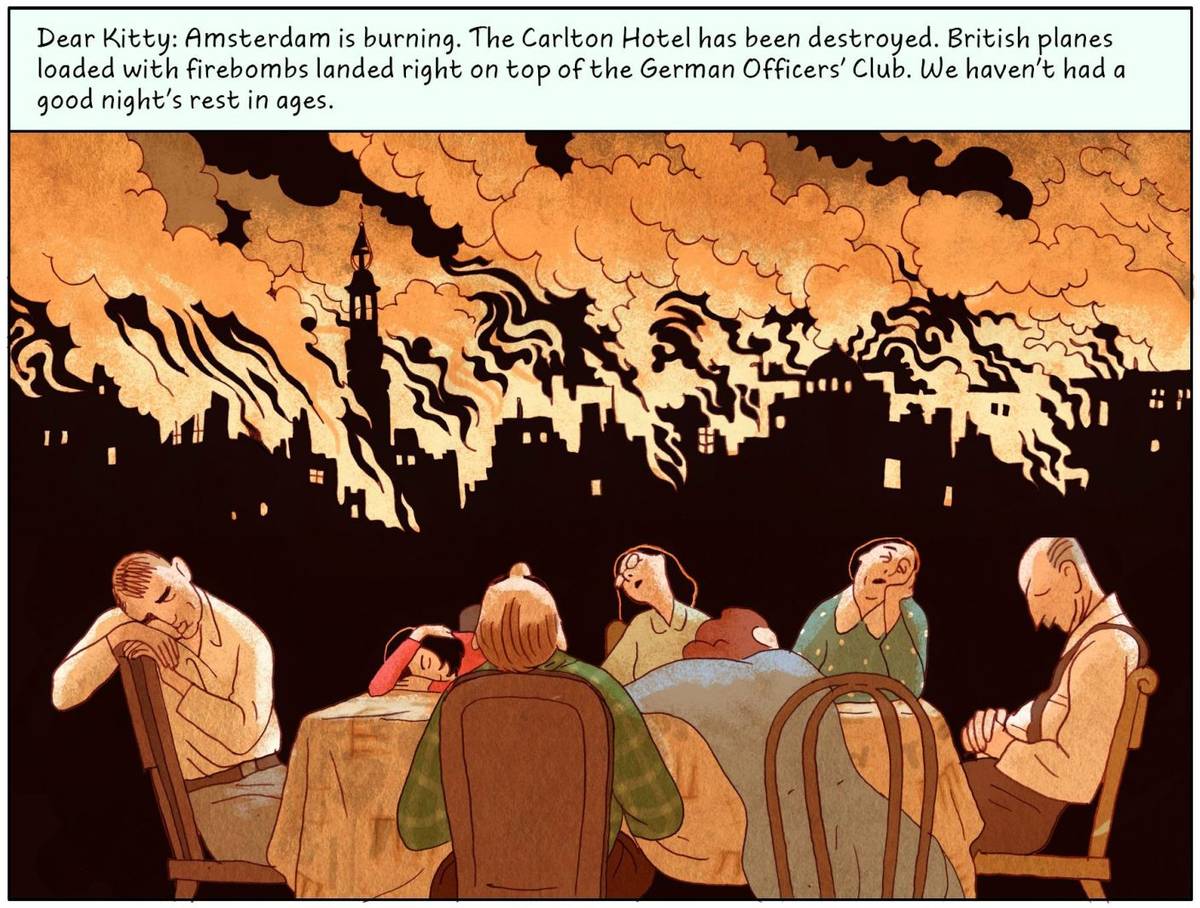
From the all-too-real world to an otherworldly, fantastical one: Spinning Silver, by New York Times-bestselling fantasy novelist Naomi Novik, was called, by Publishers Weekly in a gushing starred review, “gorgeous, complex, and magical … the kind of book that one might wish to inhabit forever.” OK! It’s being promoted as a retelling of Rumpelstiltskin, and it sort of is (the notion of a trapped girl being made to spin something less valuable into gold, the power of knowing and speaking someone’s true name). But it’s also a fairytale-folktale mashup suffused with Jewish shtetl history and Eastern European magic. Miryem is the daughter and granddaughter of Jewish moneylenders in an anti-Semitic land called Lithvas. Her family is starving because her father has been too timid to call in the debts he’s owed; to save her family, she takes over his business and finds she has the coldness and ambition necessary to collect on all these long-moldering debts and to turn money into more money. Her story entwines with that of Wanda, an uneducated non-Jewish peasant girl with an abusive, drunk father who finds warmth and comfort with Miryem’s family; and Irina, the homely daughter of a duke who doesn’t see her worth and who finds herself married to the son of the czar. There’s magic and witchcraft and demons, and the weak or cruel parents we always see in fairy tales, and mysterious frozen roads that appear and disappear. And there’s the lush language Novik is known for: “‘My mother had enough magic to give me three blessings before she died,’ I said, and he instinctively bent in to hear it. ‘The first was wit; the second beauty, and the third—that fools should recognize neither.’” This is a book for readers who want to be transported, and don’t mind that the tale-spinning takes a while. (Not published as a young adult novel, but fine for age 14+)
Chag sameach, and to all a good read.
***
Like this article? Sign up for our Daily Digest to get Tablet magazine’s new content in your inbox each morning.
Marjorie Ingall is a former columnist for Tablet, the author of Mamaleh Knows Best, and a frequent contributor to the New York Times Book Review.